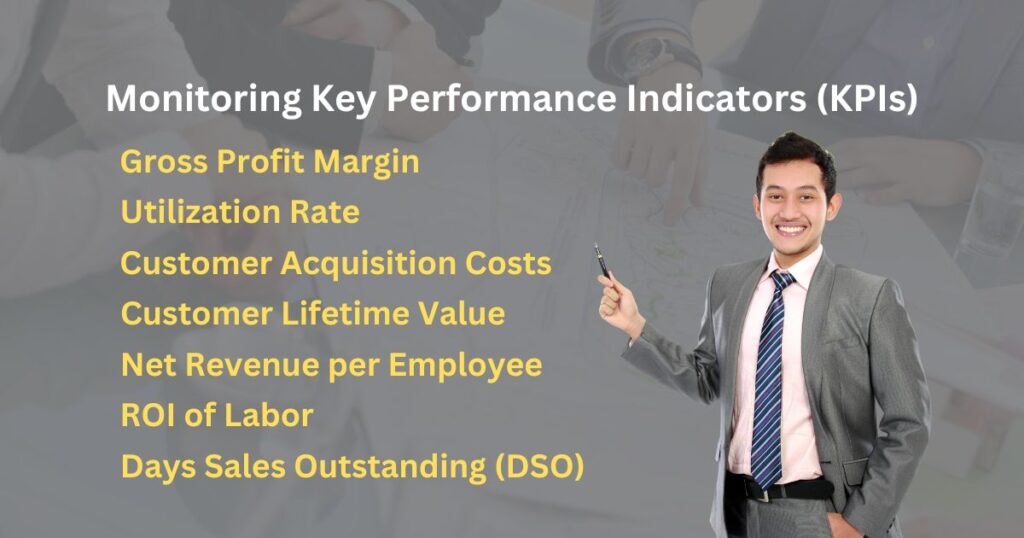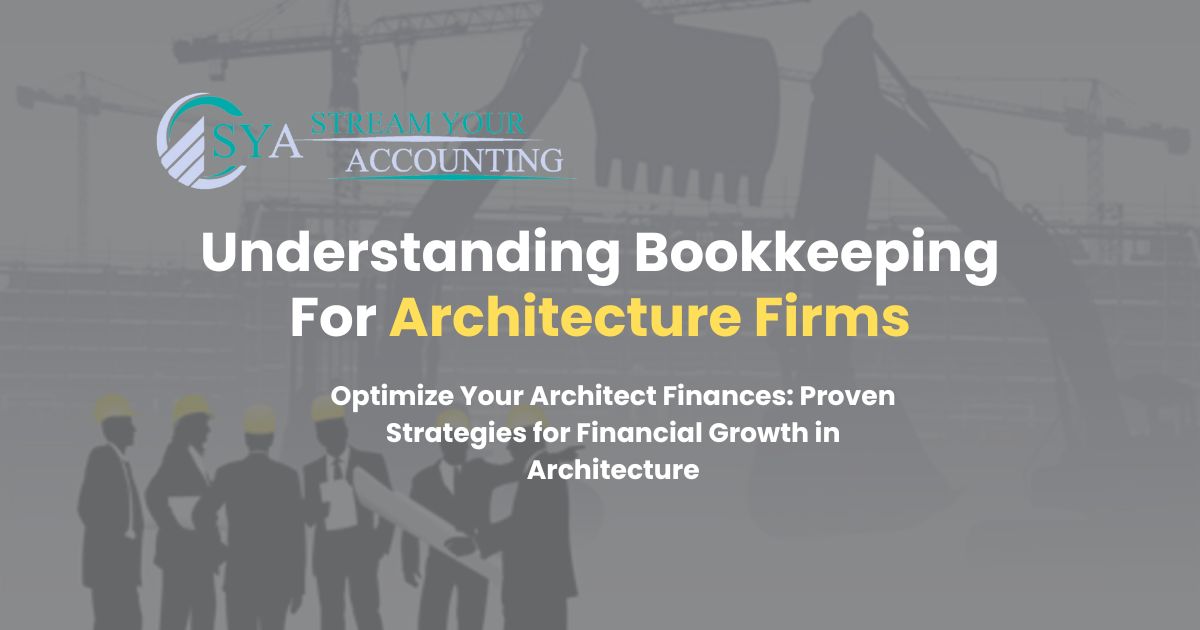Introduction
Running an architectural firm is more than just creating beautiful designs; it also involves navigating complex financial management challenges. As Adam Pearson, a principal at Net Income Pros, experienced, many architecture firms struggle with integrating various systems like project management, payroll, and bookkeeping, leading to significant issues in financial reporting. For example, one firm with 50 employees had two accountants quit due to the overwhelming workload, leaving the owner without a profit and loss statement for six months. With the help of a specialized team, the firm regained control and enjoyed its most profitable year ever. This guide will help you manage your architectural firm’s finances effectively, ensuring a healthy cash flow, compliance with financial regulations, and informed business decisions.
Understanding Bookkeeping for Architecture Firms
Keeping track of finances for architecture firms means organizing and handling all the money stuff, like income, spending, project costs, and paying employees. Doing this accurately helps you understand how your firm is doing financially, which is super important for planning and growing your business.
1. Importance of Accurate Bookkeeping
Accurate bookkeeping is like the solid foundation of a strong building. It’s vital for the stability and success of any business, including architectural firms. Let’s explore why precise accounting for architects matters:
- Guides Budgeting and Forecasting: By analyzing past financial performance, firms can make informed predictions and set realistic budgets for future projects.
- Facilitates Financial Reporting: Detailed records enable the creation of essential reports like balance sheets, income statements, and cash flow statements, providing a clear snapshot of the firm’s financial health.
- Ensures Tax Compliance: Keeping precise financial records throughout the year simplifies tax filing and reduces the risk of errors or audits.
- Aids Project Management: Tracking project costs and profitability ensures that each effort stays on budget and delivers the desired return on investment, helping firms make informed decisions at every stage.
ALSO READ THIS: What are the Pros and Cons of Professional Tax Preparers
2. Key Financial Reports for Architectural Firms
Understanding and regularly reviewing key financial reports is important for effective financial management in architectural firms. Here are the essential reports every firm should maintain:

A. Balance Sheet
- A balance sheet shows how much money your architecture firm has at a certain time.
- It shows what your firm owns (like buildings and tools), what it owes (like loans and bills), and how much it’s worth.
- This report provides insight into your firm’s overall financial health.
B. Income Statement (Profit & Loss Statement)
- The income statement outlines your firm’s revenues, expenses, and profits during a particular period, like a month or a year.
- It helps in assessing the firm’s operational performance and profitability.
C. Statement of Cash Flow
- This report illustrates the movement of cash in and out of your firm.
- It highlights how well your firm manages its cash flow and whether it has enough cash to cover ongoing expenses.
D. Trailing 12-Month Charts
- Trailing charts visually represent your firm’s financial trends over the past year.
- They help in identifying patterns and making informed, data-driven decisions to show the firm’s financial course.

3. Essential Bookkeeping Practices for Architecture Firms
Maintaining effective bookkeeping practices is important for architecture firms to stay organized and financially healthy. Here are some essential practices to follow:
- Set up consistent methods for recording and categorizing financial transactions to ensure accuracy and make it easier to track your firm’s economic performance over time.
- Take advantage of cloud-based accounting tools like QuickBooks, Xero, or specialized software designed for architecture firms. These tools offer real-time updates and easy access to financial data, simplifying the bookkeeping process.
- Utilize time-tracking software to record billable hours for projects accurately to ensure that you bill clients correctly for the work performed and help manage your team’s time efficiently.
- Integrate project management software with your accounting system to keep track of project costs, budgets, and timelines. This integration simplifies processes, helps manage resources effectively, and ensures projects stay on schedule.
- Consider hiring a professional accountant with experience in the architectural industry. They can provide valuable assistance with tax preparation, financial analysis, and strategic planning, allowing you to focus on running your firm smoothly. Stream Your Accounting (SYA) offers specialized accounting services for architecture firms, ensuring your finances are expertly managed.
ALSO READ THIS: What Does Balancing Account Mean?
4. Monitoring Key Performance Indicators (KPIs)
Monitoring key performance indicators (KPIs) is essential for understanding how well your architectural firm is performing. Here are some important KPIs to keep an eye on:

- Gross Profit Margin: This KPI measures how much money your firm makes from its projects after deducting the direct costs. It helps assess the profitability of your projects.
- Utilization Rate: The utilization rate shows how efficiently your workforce is being utilized. It shows how much of the time workers spend on tasks that can be billed to clients, compared to all the hours they could work.
- Customer Acquisition Costs: Monitoring customer acquisition costs gives insight into the expenses incurred to gain new clients. These costs cover marketing, sales, and business development efforts.
- Customer Lifetime Value: Customer lifetime value calculates how much money a customer brings to your business throughout their time as your client. It helps in assessing the long-term profitability of your client relationships.
- Net Revenue per Employee: This KPI evaluates the revenue generated per employee. It gives insights into the productivity and contribution of each employee to the firm’s overall revenue.
- ROI of Labor: ROI of labor measures the return on investment in your workforce. It helps assess the effectiveness of your human resources investments in terms of generating revenue.
- Days Sales Outstanding (DSO): DSO, or Days Sales Outstanding, is a way to figure out how long it takes for your firm to get paid after selling something. It indicates how efficiently your firm manages its accounts receivable and cash flow.
ALSO READ THIS: What is Construction Bookkeeping & Tips For Effective Bookkeeping
5. Benefits of Effective Bookkeeping for Architecture Firms
The benefits of effective bookkeeping for architecture firms are generous and crucial for the success of your business:
- Improved Financial Management: Effective bookkeeping enables you to have a clear understanding of your firm’s financial situation. This knowledge helps in making informed decisions about expenses, investments, and savings, ultimately leading to better financial management.
- Enhanced Budgeting: Accurate bookkeeping provides essential data for creating realistic budgets. By tracking income and expenses Thoroughly, you can develop budgets that align with your firm’s goals and priorities, helping you allocate resources more effectively.
- Streamlined Project Management: Proper bookkeeping practices allow for better tracking of project costs, timelines, and resources. By maintaining organized financial records, you can monitor project budgets more effectively, identify potential cost overruns early, and take necessary actions to keep projects on track.
- Increased Transparency: Effective bookkeeping promotes transparency within your firm by providing clear insights into your financial health. Transparent financial reporting promotes trust among stakeholders, including clients, employees, and investors, and helps in building stronger relationships.
- Risk Management: By regularly monitoring financial records and performance indicators, you can identify potential financial risks early on and take aggressive measures to mitigate them. This bold approach to risk management helps in safeguarding your firm’s economic stability and reputation.

6. Avoiding Common Pitfalls
Avoiding common pitfalls is essential for the financial health of architectural firms. Here are some key pitfalls to watch out for:
- Internal Fraud: Internal fraud can pose a significant threat to your firm’s finances. Implementing strong checks and balances in your bookkeeping process can help prevent fraudulent activities. For example, ensure that different employees handle different aspects of financial transactions to create a separation of duties.
- Inconsistent Record-Keeping: Consistent and accurate record-keeping is vital for effective financial management. Inconsistent bookkeeping practices can lead to errors, economic mismanagement, and compliance issues. Make sure to establish standardized procedures for recording monetary transactions and ensure that they are followed consistently.
- Not Keeping Up with Technology: Technology plays a vital role in modern bookkeeping practices. Failure to utilize the latest accounting and project management software can result in inefficient processes and decreased accuracy. Invest in user-friendly software solutions that facilitate your bookkeeping tasks and improve overall efficiency.
ALSO READ THIS: Super Due Dates 2024-25
Final Thoughts
Effective bookkeeping for architecture firms is essential for maintaining financial health and achieving long-term success. By implementing standardized procedures, using modern accounting tools, tracking relevant KPIs, and avoiding common pitfalls, you can ensure your firm’s finances are well-managed and transparent. Remember, accurate bookkeeping is not just about compliance; it’s about making informed decisions that drive your architectural firm toward growth and profitability.
Stay ahead of the competition by adopting these best practices and utilizing professional expertise. By doing so, you can focus more on your passion for architecture and less on financial management complexities.
RECOMMENDED:
Leading Bookkeeper Adelaide Services at SYA
Expert Bookkeeper Sydney Services at SYA


